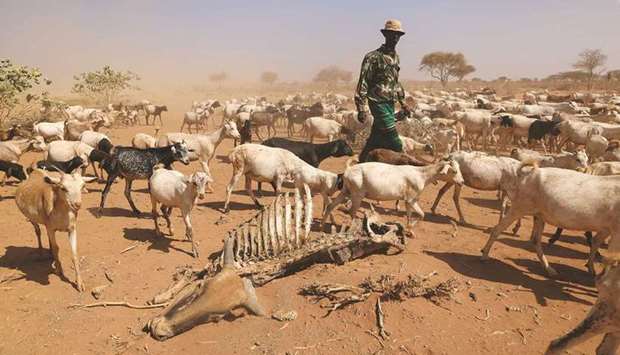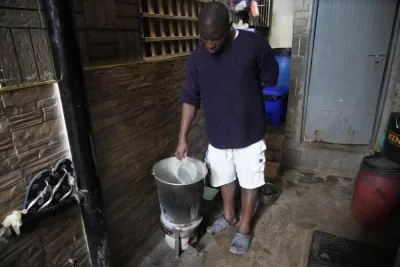In northern Kenya, the ribs of dead sheep stretch towards the blazing sun as parched herders trudge past, a day’s march from water.
The value of their skinny goats is falling as fast as the prices scrawled on the sacks in the market are shooting up.
More than 465,000 children under five and more than 93,000 pregnant and breastfeeding women are malnourished in Kenya’s northern region, the UN says.
Food prices are climbing.
In Marsabit County, food prices are 16% above average, data from the National Drought Management Authority (NDMA) shows.
“Goats are unsellable, cows are even worse to sell, and our children are starving,” Moses Loloju, a herder from Isiolo county who volunteered to help distribute food donations from the county government.
This is the second consecutive season that the rains have failed in northern Kenya, a semi-arid part of the country, unlike the more fertile and greener south.
The lack of rain means 2.4mn people in the region will struggle to find enough to eat by November, the United Nations World Food Programme says.
“The past droughts were largely predictable. We had longer cycles of 5-10 years (between them). And this meant that the pasture and water bodies would regenerate very quickly,” said Maurice Onyango, the Regional Head for Disaster risk Management for charity Plan International. “(Now), we are seeing droughts coming every two years, sometimes every year.”
Temperatures in northern Kenya have climbed by 0.34° Celsius per decade from 1985-2015, based on data from the US government.
They are expected to climb further, with heatwaves in the coming five decades likely to increase in length by between nine and 30 days, the US government data says, making it harder to grow crops or keep livestock as more water evaporates.
Much of northern Kenya is forecast to be sunny and receive below-average rainfall this month, Kenya Meteorological Department says.
Climate change is expected to increase the frequency and severity of droughts in the region.
In much of the north, this year’s long rains provided about 25-50% of normal rainfall, the NDMA, a Kenyan government agency, said.

A herder guides his goats past the remains of a cow amid an ongoing drought, near the town of Kargi in Kenya’s Marsabit county.


